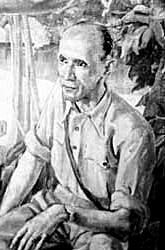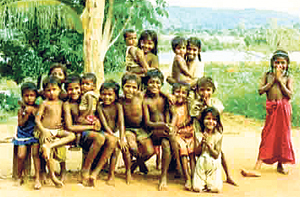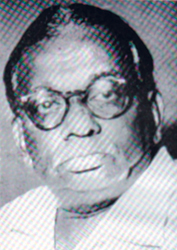This week marks the death anniversary of a highly respected authority on Sri Lanka's 'aadivaasi' – indigenous people, the Veddas. He is Dr. Richard Lionel Spittel (1881-1969), surgeon who was also an anthropologist and naturalist who passed away on September 3, 1969.
He has written several books starting with 'Wild Ceylon'(1924) described as "a great classic of the Ceylon jungles, also depicting in vivid language the life of Veddas of Ceylon, a fast dying-out aboriginal race which yet retains many of its primitive customs." It was hailed as the first authoritative work after Professor Seligmann wrote his
monumental book on the Veddas.
 |
| Dr. R. L. Spittel |
In his preface to the book, Dr. Spittel traces the origin of Veddas as an off-shoot of one of the wild, autochthonous tribes in India, who crossed over to Ceylon, in prehistoric times, when the two lands were one, and subsequently got cut off by the inroad of the sea. Stating that the Veddas appear to be very akin to the Gonds of India, he mentions that the description of a Gond well applies to the Vedda –" A man of small sturdy build, with piercing eyes and a free athletic carriage… axe hitched on shoulder, bow and arrows in hand."
Dr. Spittel's well known book, 'Savage Sanctuary' was written in 1941,
followed by 'Vanished Trails.' The latter is a story depicting the lives of three generations of Veddas in their transition from the troglodyte, food-gathering stage to the crude beginnings of the hut-dweller and food producer.
"The device of presenting social anthropology in the form of a novel that tresses the human interest, rather than after the severely detached manner of the purely scientific investigator, was begun in my previous book, and has been continued in 'Vanished Trails' with more success," he says in his preface written in 1944.
Even in his first book, 'Wild Ceylon' he described the Veddas and the Vedda country in a most readable manner in the form of a narrative of a long journey. "We left Colombo in a burdened car which carried everything requisite – food, cook, tent and camp furniture – for an outing that relied for hospitality neither on hostelry nor friend. We were free to make ourselves at home wherever and whenever we pleased and at evenings we camped by the jungle roadside."
 |
| In the Vedda country |
His description of Bintenne, the traditional home of Veddas, is vivid. "Cosy homes and boutiques nestle under shady trees. Chained monkeys and caged parrots are ubiquitous and may be purchased for a song. Laden 'tavalam' teams rest here on their way to the interior. It being April, every tree has its nesting bird – bee-catchers, bulbuls, drongos, coppersmiths and all the rest of them; hungry little squirrels cheep spasmodically for food; song fills the air."
Other books written by Dr. Spittel are 'Where the White Sambhur Roams' and 'Wild White Boy.' Some of his books have been translated into Sinhala thereby providing the Sinhala reader an opportunity to enjoy good writing.
Being a wild life enthusiast, he was the President of the Fauna and Flora Society and editor of the wild life magazine 'Loris' for 30 years. His birthplace was Tangalle.
Remembering a reputed artist
 |
| J. D. A. Perera |
A reputed artist is also remembered this week. He is J.D.A. Perera (1897–1967), principal of the Government College of Fine Arts for many years.
Renowned as a portrait painter, during a stint in Europe on a government scholarship he exhibited his work with several art societies in England and France. In Sri Lanka he was a prominent member of the Ceylon Society of Arts of which he was a Vice-President for several years. He regularly took part in exhibitions organised by the Society of Arts.
He started teaching Art at the Ceylon Technical College where Art was taught as a subject. It was later that the College of Fine Arts
(popularly known as 'Heywood') was started.
He moved over as a lecturer and became principal in 1953. It was this institution that has now transformed into the University of Aesthetic Studies.
Painter/teacher Perera died on
September 6, 1967. |



